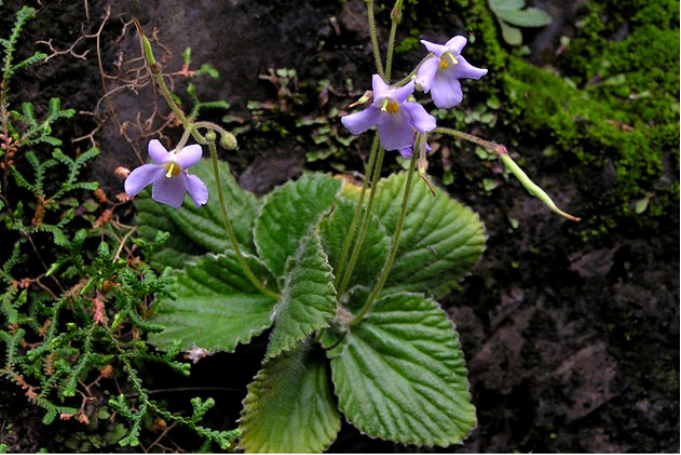
Boea hygrometrica
Boea hygrometrica is a small dicotyledenous, homiochlorophyllous resurrection plant in the Gesneriaceae family, and it is widespread in China, inhabiting shallow rock crevices from humid tropical regions to arid temperate zones. Boea hygrometrica has been used in traditional medicine, mainly against fever, cough, colds, snakebite, pains, and infectious and inflammatory diseases.
Year:2015
Institution:
School of Life Sciences, Capital Normal University, Beijing 100048, China
Data link: http://herbalplant.ynau.edu.cn/index.php?m=content&c=index&a=show&catid=100&id=156

Jatropha curcas L.
In the last few years the potential of the drought resistant tropical tree Jatropha curcas L. for the production of biofuels and industrial products has been assessed by several groups. Various biologically active substances have been isolated and characterized from all parts of the plant. These substances have also been examined for their toxicological properties, their effect on blood pressure, smooth muscle and capillary permeability.
Year:2015
Institution:Key Laboratory of Plant Resources Conservation and Sustainable Utilization, South China Botanical Garden, Chinese Academy of Sciences, Guangzhou 510650, China
Data link: http://herbalplant.ynau.edu.cn/index.php?m=content&c=index&a=show&catid=100&id=157
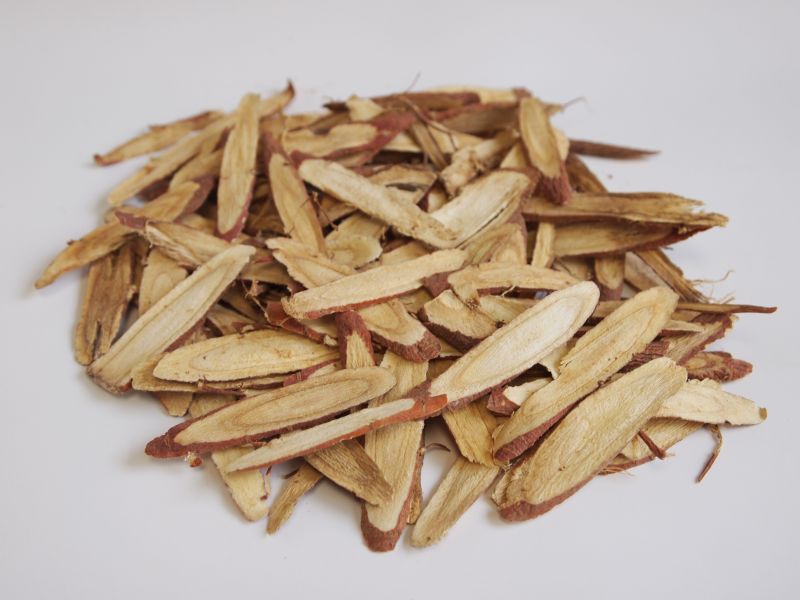
Glycyrrhiza uralensis
The roots and rhizomes of licorice (Glycyrrhiza) species have long been used worldwide as a herbal medicine and natural sweetener. Licorice root is a traditional medicine used mainly for the treatment of peptic ulcer, hepatitis C, and pulmonary and skin diseases, although clinical and experimental studies suggest that it has several other useful pharmacological properties such as antiinflammatory, antiviral, antimicrobial, antioxidative, anticancer activities, immunomodulatory, hepatoprotective and cardioprotective effects.
Year:2017
Institution:RIKEN Center for Sustainable Resource Science, 1-7-22 Suehiro-cho, Tsurumi-ku, Yokohama, Kanagawa 230-0045, Japan
Data link: http://herbalplant.ynau.edu.cn/index.php?m=content&c=index&a=show&catid=100&id=158

Cannabis sativa
Cannabis sativa L. (marijuana, hemp; Cannabaceae) has been used for millennia as a source of fibre, oil- and protein-rich achenes ("seeds”) and for its medicinal and psychoactive properties. From its site of domestication in Central Asia, the cultivation of cannabis spread in ancient times throughout Asia and Europe and is now one of the most widely distributed cultivated plants.
Year:2011
Institution:
Banting and Best Department of Medical Research and Terrence Donnelly Centre for Cellular and Biomolecular Research, University of Toronto, 160 College St. Room 230, Toronto, ON, M5S 3E1, Canada
Data link: http://herbalplant.ynau.edu.cn/index.php?m=content&c=index&a=show&catid=100&id=159

Macleaya cordata
Macleaya cordata (Chinese name ‘‘Bo-luo-hui’) , mainly distributed in China, Southeast Asia, North America, and Europe and were utilized as traditional medicines for a long time. A high level of antimicrobial benzylisoquinoline alkaloids (BIAs), such as SAN, CHE, protopine (PRO), and allocryptopine, are produced in this plant, whereas addictive BIAs, such as morphine and codeine, are completely absent.
Year:2017
Institution:
National and Local Union Engineering Research Center of Veterinary Herbal Medicine Resource and Initiative
Data link: http://herbalplant.ynau.edu.cn/ index.php?m=content&c=index&a=show&catid=100&id=160
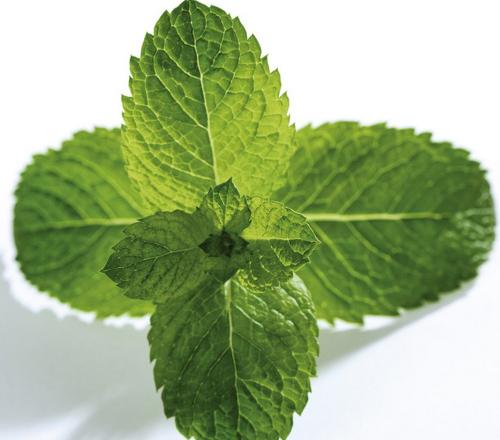
Mentha longifolia
Mint, Mentha longifoli , are commonly cultivated in the world for essential oil production that is used extensively in the liquor and confectionary industries, flavoring, perfume production and medicinal purposes.
Year:2016
Institution: Department of Horticulture, Oregon State University, Corvallis, OR 97331, USA
Data link: http://herbalplant.ynau.edu.cn//index.php?m=content&c=index&a=show&catid=100&id=161
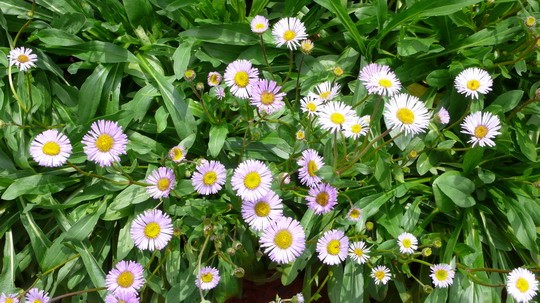
Erigeron breviscapus
Erigeron breviscapus (also known as dengzhanhua in Chinese) is a perennial flower in theErigeron genus of the Compositae (Asteraceae) family. This species is endemic to Southwestern China, and it grows in mid-altitude mountains, subalpine open slopes, grasslands, and forest margins from 1000 m to 3500 m. In traditional Chinese medicine, E. breviscapus is believed to improve blood circulation and ameliorate platelet coagulation. Since the 1980s, herbal extracts and bioactive compounds from E. breviscapus have been widely used for the treatment of cerebral embolism and its complications, cerebral thrombosis, coronary heart disease, angina pectoris, acute renal failure, and nephritic syndrome.
Year:2015
Institution: National-Local Joint Engineering Research Center on Germplasm Utilization and Innovation of Chinese Medicinal Materials in Southwest China, Yunnan Agricultural University, Kunming, China
Data link:
http://herbalplant.ynau.edu.cn/index.php?m=content&c=index&a=show&catid=100&id=151

Panax notoginseng
Year:2015
Institution: National-Local Joint Engineering Research Center on Germplasm Utilization and Innovation of Chinese Medicinal Materials in Southwest China, Yunnan Agricultural University, Kunming, China
Data link:
http://herbalplant.ynau.edu.cn/index.php?m=content&c=index&a=show&catid=100&id=150

Moringa oleifera Lam.
M. oleifera is known as horseradish tree or ben tree, and is a small to medium-sized, evergreen or deciduous tree native to northern India, Pakistan and Nepal. In some developing areas, such as Brazil and Cuba, efforts to spread the use and cultivation of M. oleifera have been promoted due to high protein, vitamin and mineral contents of M. oleifera. It grows well at altitudes from 0 to 1800 m and rainfall between 500 and 1500 mm per year. It is therefore useful for semi-arid and arid ecosystem, which covers 37.0% geographical area of the earth.
-
Year:2015
Institution: College of Life Science, Kunming University of Science and Technology, Kunming, China
Key Laboratory of Pu-erh Tea Science, Ministry of Education, Yunnan
Agricultural University, Kunming, China
Data link: http://herbalplant.ynau.edu.cn/index.php?m=content&c=index&a=show&catid=100&id=65
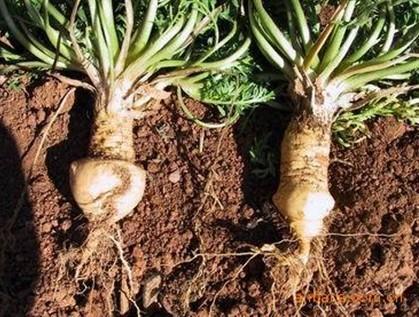
Lepidium meyenii Walp.
Lepidium meyenii Walp., known as Maca, is a famous crop and herbal plant originated from the 4000-4500 m plateau of the central Peruvian Andes. It is sold as a nutritional supplement and is gaining popularity as a botanical extract for, among other things, its enhancement of energy and sexual performance.
Year:2016
Institution:School of AgricultureYunnan University
Key Laboratory of Pu-erh Tea Science, Ministry of Education, Yunnan Agricultural University, Kunming, China
Data link: http://herbalplant.ynau.edu.cn/index.php?m=content&c=index&a=show&catid=100&id=66